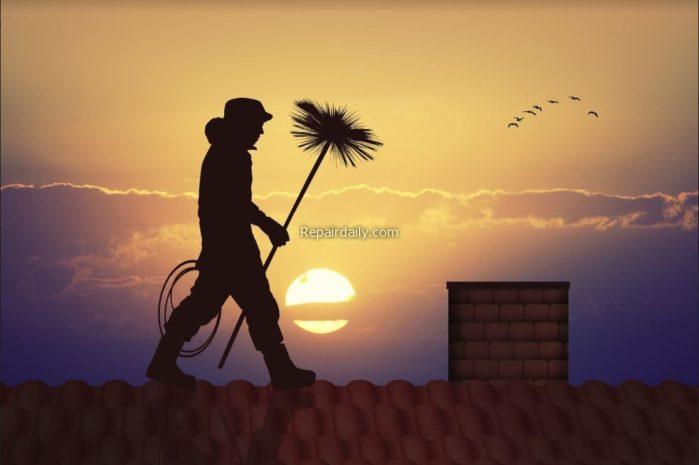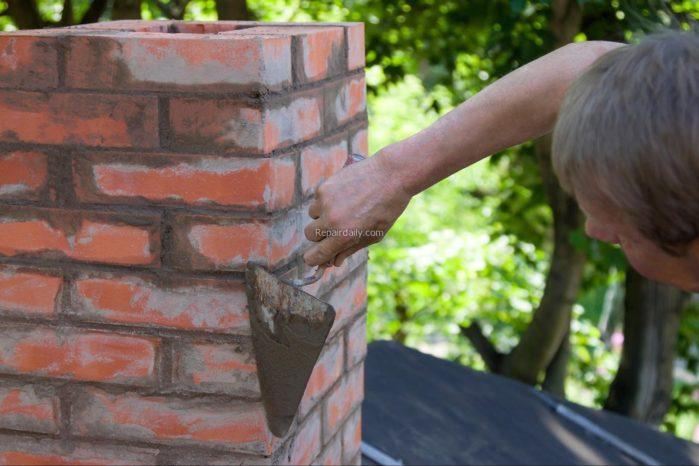
How To Check Possible Repairs For Parts Of A Chimney


rooftop chimney
Having a fireplace at home is particularly beneficial during the colder months. Aside from giving warmth to your home, lighting up the fireplace is something that family members look forward to. Some people enjoy playing board games with the family while sipping hot cocoa by the fire, while others read a book on the couch near the fireplace. A well-maintained chimney is essential for an enjoyable winter experience.
What is the Purpose of a Chimney?
Some people may think that a chimney is just a vent for the smoke from the fireplace. While, in essence, this is true, a chimney is much more complicated than just a hole on the roof. A damaged chimney will not only ruin the experience for you and your family; it can have devastating effects on your home. That being said, the chimney must be cleaned and inspected before using it.
A chimney is designed to be a vent to release hot air from fuel combustion. It also allows air to circulate in the fireplace through the column. The outside of a chimney is typically brickwork, but the inside column is usually made of clay tiles.
Just like the roof of your house, a chimney can wear and tear and be damaged over time because of natural disasters, accidents, or weathering. Aside from these types of damage, poor craftsmanship can also make your fireplace and chimney a potential fire hazard. Although your home’s chimney can pose different dangers and health risks, these can be prevented by regular chimney cleaning, careful inspection, as well as professional maintenance and repairs.
Checking for Chimney Repairs
It is best to commission a certified service provider to thoroughly clean and inspect the chimney and fireplace every year. For homeowners who are willing to take on DIY repairs and regular inspections, it is crucial to learn more about chimneys, their cleaning, repair, and maintenance. If you must do this, or instance, aside from being a skilled handyman, you must not be afraid of heights. If you have any doubts about that, you should entrust the maintenance and repair of the chimney interior to professional tradespeople.
The key parts of a chimney include the chimney cap, the chimney crown, the chimney flashing, the chimney flue, the chimney liner, the damper, and the smoke chamber. If you are unfamiliar with the parts of a chimney, the damage can sometimes be difficult to pinpoint. Here are the components of a chimney and the possible repairs that these may need over time:


making chimney
- The Bricks
If you want your fireplace and chimney to perform well, the integrity of the structures should be inspected regularly. For instance, the chimney’s bricks are the most critical parts of the chimney and should always be maintained and kept in good condition because these serve as the chimney’s foundation.
White stains can settle on the brickwork over time. In the chimney maintenance and repairs trade, this is known as efflorescence. While stains on the bricks are not usually a cause for worry, these can also mean that moisture is seeping through the brickwork. If ignored, this can eventually lead to water damage. Water damage poses a mildew and mold problem. At the same time, it can also weaken the chimney’s structural integrity.
Efflorescence can be scrubbed off with a stiff-bristled brush and water and mild detergent. If the white stains cannot be removed with mild soap and brush, you can also consider sandblasting, power washing, or cleaning with chemicals. Even more important, you should try and ensure that the cracks are sealed immediately after the efflorescence is removed.
Mortar joints keep the bricks together. You should check if the brickwork has deteriorating mortar joints. If these are left unrepaired, there will be further damage to the chimney. The foundation of the chimney will be adversely affected. One way to fix the mortar joints is by removing the old material and apply fresh mortar between the gaps.
- The Crown
The chimney’s crown (also known as the wash) protects the chimney’s interior from external elements such as snow, water, hail, and the like. Even if there is a chimney cap to cover the flue opening, the crown is still an essential part that covers the entire top area.
The crown can crack or melt over time and, as a result, moisture will penetrate and cause the mortar to disintegrate. If water is allowed to continue and seep in through the liner of the chimney, this will result in spalling. It is important to repair a cracked crown before spalling becomes severe. Filling up the cracks will usually fix any spalling issue.
- The Chimney Flue
When you light up the fireplace, most of the wood goes up in smoke. At the same time, burning fuel also produces creosote, the dark substance that settles on the inside of the chimney flue and, over time, becomes a build-up known as soot. The vertical chute (chimney flue) is necessary to release the smoke and other results of combustion from your fireplace.
Creosote buildup is increased when there is insufficient combustion of wet wood that is used to light up the chimney. Since too much accumulation of creosote buildup can spark chimney fires, you should consider using anti-creosote powder on the firewood. At the same time, you should try and invest in professional creosote buildup removal services regularly, or at least once a year.
- The Damper
All fireplaces have a damper, a steel or iron plate located above the fireplace that plays a crucial role in the fireplace and chimney system. To light up the fireplace, the damper should be open to allow air in. The damper must be closed when you are done using the fireplace.
When the damper accumulates rust, it will be challenging to operate. A stuck damper will obstruct airflow and make it difficult to keep the fire alive. What’s worse – it can push back all the smoke into your home and endanger the health of everyone living there. Rusty dampers are a sign that moisture or water is seeping into the chimney. Check if the damper can still be cleaned and scrub it vigorously with a metal brush and a rust-removing solution. Replace the chimney damper if there is too much rust and can no longer be used.
Takeaways
Faulty and damaged chimney systems pose several risks not only to physical property but also to the health of those living in the house. Fires and other and health hazards can be prevented by understanding how the fireplace and chimney system works. It is also best to invest in the services of a professional tradesperson to regularly inspect the different parts of your chimney.
